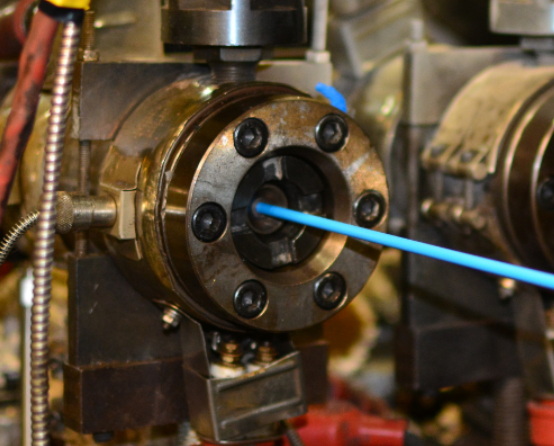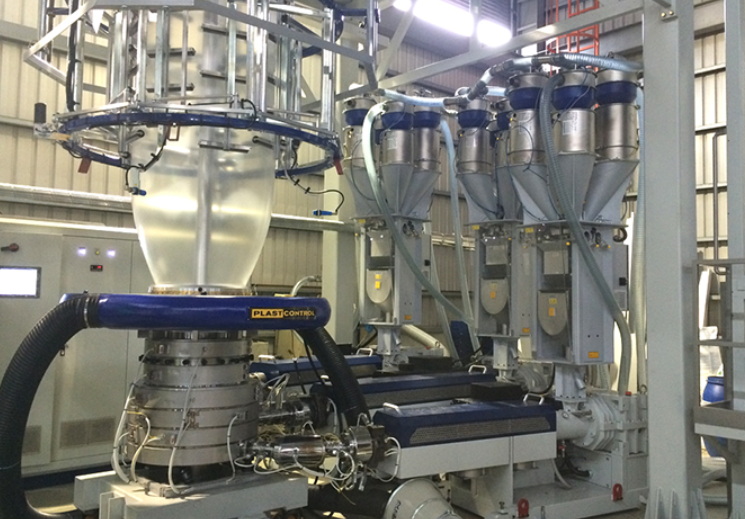Content Menu
● Understanding Plastic Film Extrusion
>> Types of Plastic Film Extrusion Equipment
● Key Factors to Consider When Choosing Equipment
>> 1. Material Compatibility
>> 2. Production Capacity
>> 3. Film Specifications
>> 4. Technology and Features
>> 5. Cost Considerations
● Components of Plastic Film Extrusion Equipment
● Maintenance of Plastic Film Extrusion Equipment
● Advanced Technologies in Plastic Film Extrusion
● Environmental Considerations
● Case Studies and Best Practices
● Conclusion
● FAQ
>> Q1: What types of plastics are commonly used in film extrusion?
>> Q2: How does blown film extrusion differ from cast film extrusion?
>> Q3: What should I consider regarding production capacity?
>> Q4: Why is temperature control important in extrusion?
>> Q5: How often should I maintain my extrusion equipment?
Selecting the right plastic film extrusion equipment is crucial for manufacturers aiming to produce high-quality plastic films efficiently. This guide will walk you through the essential factors to consider when choosing equipment, along with insights into different types of machines, their components, and maintenance practices.

Understanding Plastic Film Extrusion
Plastic film extrusion is a manufacturing process where plastic materials are melted and formed into continuous films. The process involves several key components:
- Extruder: The heart of the operation, where raw materials are melted and shaped.
- Die: Shapes the molten plastic into film.
- Cooling System: Solidifies the film after extrusion.
- Winding System: Rolls the finished film for storage or shipment.
Types of Plastic Film Extrusion Equipment
There are two primary types of extrusion processes used for producing plastic films:
- Blown Film Extrusion: Involves blowing air into the molten plastic to create a thin tube, which is then flattened into a film. This method is widely used for producing bags and packaging films. Blown film extrusion allows for a wide range of film thicknesses and is versatile in terms of material compatibility.
- Cast Film Extrusion: The molten plastic is spread onto a flat surface and cooled to form a film. This method is often used for producing thicker films with specific properties, such as clarity and strength. Cast film extrusion is preferred for applications requiring precise thickness control and uniformity.
Key Factors to Consider When Choosing Equipment
1. Material Compatibility
Different plastics require different processing parameters. It's essential to choose equipment that can handle the specific type of plastic you intend to use, such as:
- Low-Density Polyethylene (LDPE): Commonly used for packaging films due to its flexibility and transparency.
- High-Density Polyethylene (HDPE): Offers higher strength and is often used for containers and bottles.
- Polypropylene (PP): Known for its chemical resistance and is used in various packaging applications.
- Polyvinyl Chloride (PVC): Used in a wide range of applications, including construction and medical devices.
2. Production Capacity
Evaluate your production needs. The equipment should be able to meet your output requirements, typically measured in kilograms per hour. Consider future scalability as well. Investing in equipment with higher capacity than your current needs can provide flexibility for future growth.
3. Film Specifications
Determine the required thickness and width of the films you need to produce. Ensure that the chosen equipment can accommodate these specifications. For instance, if you need to produce films with precise thickness control, cast film extrusion might be more suitable.
4. Technology and Features
Modern extrusion machines come with advanced features that enhance efficiency and product quality:
- Temperature Control Systems: Precise control over temperature is crucial for maintaining product quality. Advanced systems allow for real-time monitoring and adjustments.
- Screw Design: Different screw designs can affect mixing, melting, and output quality. Some screws are optimized for specific materials or production rates.
- Control Systems: Advanced controls allow for real-time monitoring and adjustments during production. This can include automation features that optimize production parameters based on material properties and desired output.
5. Cost Considerations
While it may be tempting to opt for cheaper equipment, consider the total cost of ownership, including maintenance, energy consumption, and potential downtime costs. High-quality equipment might have a higher upfront cost but can offer long-term savings through efficiency and reduced maintenance needs.

Components of Plastic Film Extrusion Equipment
Understanding the components of extrusion machinery can help in making informed decisions:
| Component | Description |
| Hopper | Feeds raw materials into the extruder. |
| Barrel | Houses the screw and heats the plastic pellets to melt them. |
| Extruder Screw | Moves and melts the plastic; its design impacts efficiency and quality. |
| Die | Shapes the molten plastic into film; customization may be necessary. |
| Cooling System | Cools down the extruded film to solidify it into its final shape. |
| Winding System | Rolls up finished film for storage or shipment. |
Maintenance of Plastic Film Extrusion Equipment
Regular maintenance is vital for ensuring longevity and efficiency:
- Routine Cleaning: Prevents contamination and maintains product quality. Regular cleaning also helps in identifying potential issues early.
- Lubrication: Keeps moving parts functioning smoothly. Proper lubrication reduces wear and tear on components like the extruder screw.
- Inspection: Regular checks on components like screws and dies can prevent costly breakdowns. Early detection of wear can lead to timely replacements, minimizing downtime.
Advanced Technologies in Plastic Film Extrusion
Recent advancements in plastic film extrusion technology have significantly improved efficiency and product quality:
- Nanotechnology: Incorporating nanoparticles into films can enhance strength, barrier properties, and UV resistance.
- Biodegradable Materials: There is a growing trend towards using biodegradable plastics, which require specialized equipment capable of handling these materials.
- Automation and IoT Integration: Modern machines often integrate with IoT systems, allowing for real-time monitoring and optimization of production processes.
Environmental Considerations
With increasing environmental concerns, manufacturers are looking for ways to reduce their ecological footprint:
- Energy Efficiency: Choosing equipment with energy-efficient designs can reduce operational costs and environmental impact.
- Recyclable Materials: Using recyclable plastics and designing products for recyclability are becoming essential considerations.
- Waste Reduction: Implementing processes that minimize waste during production can contribute to a more sustainable operation.
Case Studies and Best Practices
Real-world examples can provide valuable insights into successful implementations of plastic film extrusion equipment:
- Example 1: A packaging company increased production efficiency by 20% by upgrading to advanced extrusion equipment with real-time monitoring capabilities.
- Example 2: A manufacturer reduced energy consumption by 15% by implementing energy-efficient cooling systems.
Conclusion
Choosing high-quality plastic film extrusion equipment involves careful consideration of material compatibility, production capacity, technology features, cost implications, and maintenance practices. By understanding these factors, manufacturers can make informed decisions that enhance production efficiency and product quality. Additionally, embracing advanced technologies and environmental considerations can further optimize operations.

FAQ
Q1: What types of plastics are commonly used in film extrusion?
A1: Common plastics include LDPE, HDPE, PP, and PVC, each suited for different applications based on their properties.
Q2: How does blown film extrusion differ from cast film extrusion?
A2: Blown film extrusion creates a tube that is flattened into a film, while cast film extrusion spreads molten plastic onto a flat surface to cool.
Q3: What should I consider regarding production capacity?
A3: Assess your current needs as well as future growth potential to ensure your equipment can handle increased demand.
Q4: Why is temperature control important in extrusion?
A4: Precise temperature control ensures consistent melting and processing of plastics, which directly affects product quality.
Q5: How often should I maintain my extrusion equipment?
A5: Regular maintenance should be performed according to manufacturer recommendations, typically involving routine cleaning and inspections.






















